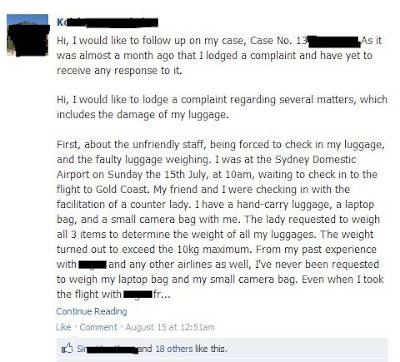Today, I'll be sharing about social networking sites, how they can be used to achieve objectives, and some implementation strategies which can help growing organizations like American Airlines.
Ever since the birth of Facebook and Twitter, more and more companies are now interacting with their customers social networking sites. In my previous blog posts, I've mentioned about how Campos Coffee, Clearly Contacts, and American Airlines uses Facebook and Twitter to build a reputation by relating to their customers.
To help businesses get the most out of social media, Sharlyn Lauby, president of the Internal Talent Management (ITM), came up with 5 techniques of implementing social media business strategies. One of the most important strategies among these which organizations could employ is to first "Determine Your Objective".
Determine Your Objective
Knowing your objectives should always be the first thing to do when planning something. This is important because having an objective to focus upon keeps you from straying away and wasting precious time and resources. To determine your objective, the following questions can be asked:
- What do you want this to do for your company? - Some companies might turn to social networking to increase their reputation and other times, they might just use it to collaborate and achieve employee satisfaction.
- What do you want others to say about you? - An organization might want to be known as a company that connects well with their customers or in some cases, they might want to be known as an organizations who cares and is responsible for the world and it's issues
After answering these questions, a better understanding of your objectives would be developed. Here's a few examples of typical objectives:
- Become recognized by a certain body
- Receive a specific award title
- Getting a certain percentage of new clients within a timeframe
- Becoming an industry leader in the next few years
With your objectives all set, you will find that planning becomes simpler and more systematic. Besides that, achieving these objectives also becomes less overwhelming.
Final Thoughts:
Apart from determining your objectives, businesses should also use more than one social networking website to stay ahead of their game. On top of that, they could also employ evangelists, consider their employees, check their existing technologies, and also to listen and observe from others. For more details on these strategies, feel free to visit Adrian and Blake's posts .



















